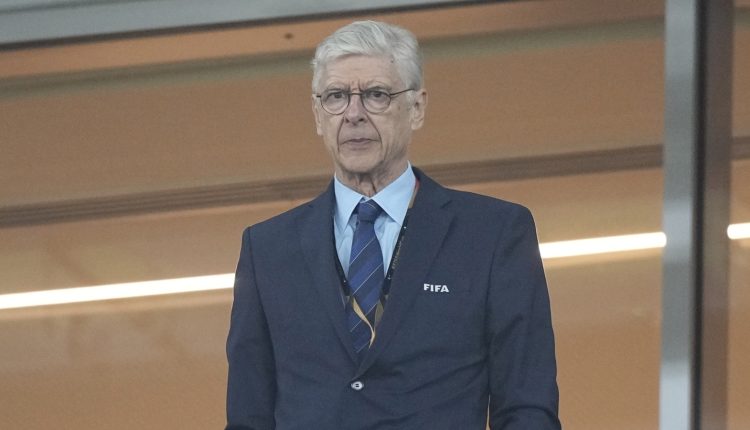“I must come to India because I have never been there,” said Arsene Wenger.
The question from HT was after a session of the FIFA Technical Study group (TSG) where Wenger and Juergen Klinsmann spoke of the trends in the first round after studying around 20,000 data points per match. “Your president met me recently and I have said I would love to help India develop football,” said Wenger FIFA’s chief of Global Football Development here on Sunday.
Also Read | Brazil head coach Tite shares massive update about Neymar’s fitness ahead of South Korea clash at FIFA World Cup 2022
The All India Football Federation (AIFF) has said that Wenger could visit India to advise on youth development projects. “It will not happen this year because we finish here on December 18 but maybe in the first six months of the next year,” he said.
“You guys play too much of cricket,” he said with a smile before being escorted out of the auditorium.
From the group stage games, the TSG has found that teams used the wings more and Wenger said that the team with the best wide players have a greater chance to win the World Cup. “That includes full backs. The centre has been better protected than in Russia and that has forced players to go wide. It is also why there have been less balls played behind the defence,” he said.
The number of goals from crosses has gone up by 83% from 2018, according to data collated by TSG. Thirty per cent of the moves have been from the left flank and 28% from the right. Crowding the centre also explained why attempts on goal have come down, from 12.0 in Russia to 10.9 here, said Wenger.
“Teams have got two lines (defence and midfield) to play close to each other and that has reduced space for players to pull the trigger,” said Klismann. The exception? “Lionel Messi’s goal against Mexico where he found space from outside the box,” said Klinsmann.
“As a striker, I would prefer crosses from the end line as it makes it easier to lose your marker. Players here have not been shy of crossing the ball early so it helps if a forward can read the situation and make the run,” he said.
The goals per game metric is on 2.5, similar to what it was in Russia where after the group stages it was 2.54, according to data shared by TSG. The goals in 90+ minutes too have come down from 21 in 2018 to 12 here. “Using five substitutes to protect defences better can be a reason,” said Wenger.
And because the middle has been better protected there have been fewer goals from outside the box, said Wenger. That was the cue for Klinsmann to again speak of teams suffering because they lacked a No. 9. “Germany had 67 attempts on goal, the maximum, but have gone home because they could not finish the chances they created. We haven’t had a No. 9 since Miroslav Klose. The False Nine always has an excuse that they are not genuine scorers,” he said.
Poland and Australia qualified to the round of 16 with 20 attempts, the lowest, Argentina had 58 while France and Brazil had 52 each.
South American teams had the highest number of individual take-ons, 3.6, UEFA has 2.1. “In Europe, there is a trend to teach players to play one-two passes and that takes away the ability to successfully execute one-on-one tackles. In South America, given its tradition of street football, kids love taking on players,” said Klinsmann.
Wenger said “a photo of the stat” that showed how many players teams have used “should be taken to show their impact on the competition.” Brazil have used 25, Portugal and France 24 but Croatia, who play Japan on Monday, have used only 16.
And despite Croatia using the fewest number of players, they have run 116km per game; USA topped that data chart with 123km. The number for Argentina is 105km and that “because they play a high line,” said Wenger. “Teams that have more of the ball, run less.”
What has also changed is the role of goalkeepers. From 443 in Russia, the number of times a goalkeeper has offered to receive the ball has gone up to 726. The goalkeeper has been a key element in distribution, said Wenger. “In our time, the No. 10 would be adored because he would create goal-scoring opportunities. Now, the goalkeeper plays with a defensive mid, who then plays to an attacking mid and then to a forward. So you can have three playmakers,” said Klinsmann.


